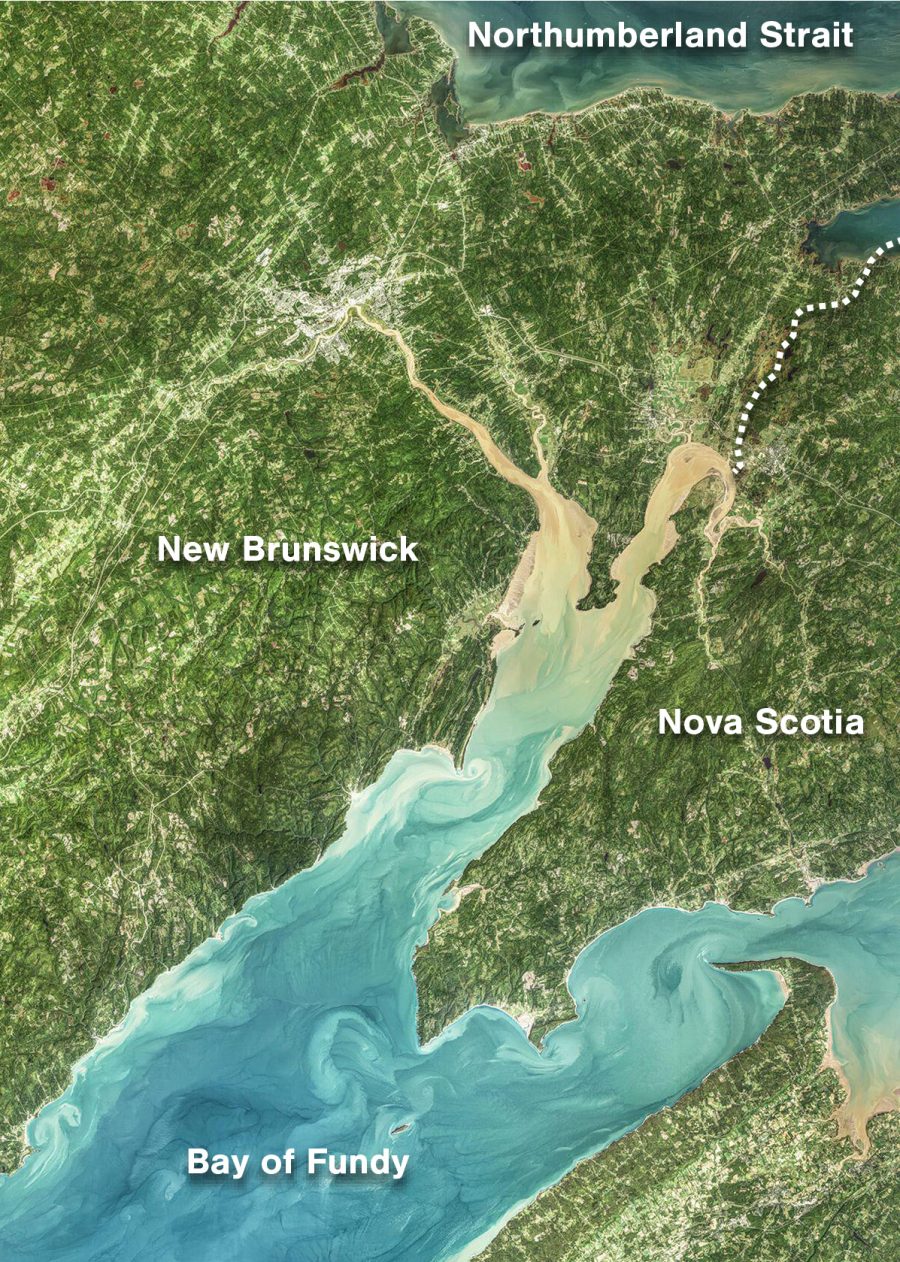The Chignecto Isthmus—the low marshy strip connecting New Brunswick and Nova Scotia—may be one of the most vulnerable places in Canada to sea level rise. At just 21 kilometers wide, the interprovincial land bridge is battered on its southwestern flank by the famously extreme tides in the Bay of Fundy. Protected by a network of earthen dikes first constructed in the 1600s, “the tops of the dikes are only a little higher than the spring high tides,” says Jeff Ollerhead, a coastal geomorphologist at Mount Allison University, located in Sackville, New Brunswick, at the western end of the isthmus. “If we have a big storm,” he says, “water will go over the dikes.”
When scientists and the public fret about sea level rise, they mostly focus on when and where communities will be permanently flooded. But there’s another consequence of rising seas that will affect many more people much sooner: getting cut off from roads and other critical infrastructure. It’s a threat that society has not paid nearly enough attention to, says Allison Reilly, a civil engineer at the University of Maryland.
The flood-prone Chignecto Isthmus shows what’s at stake. Hidden behind the barely sufficient dikes are reams of vital infrastructure: the Trans-Canada Highway, a Canadian National Railway line, multiple electrical transmission lines and fiber-optic cables, a wind farm, and agricultural land.
Though it’s unlikely the Chignecto Isthmus will be fully flooded any time soon—a disastrous outcome that would sever the link between New Brunswick and Nova Scotia—disruptions from storm-related flooding are becoming more common. That’s bad news for people like Ollerhead, who frequently cross the isthmus to get to medical appointments, access the international airport in Halifax, Nova Scotia, or even take shopping trips to Ikea. At a broader scale, temporary flooding of the highway or rail line could disrupt activity in the Port of Halifax, a major economic driver for the region.
In a new paper, Reilly and her colleagues show the breadth and pace of the isolation threat. Inspired by her work on the eastern shore of Maryland, where people already need to adjust their travel and work schedules to account for tides that frequently swamp roads, Reilly and her colleagues calculated that, with one meter of sea level rise, twice as many people across the coastal United States will be isolated than will be inundated. “People who live [three meters] above sea level, their house might be okay,” she says. “But that doesn’t mean they will be reliably able to get to the grocery store.”

The Chignecto Isthmus is a relatively low-lying, 21-kilometer-wide land bridge between Nova Scotia and New Brunswick, Canada. If the isthmus were to flood completely, it would cut Nova Scotia off from the mainland. But even more restrained flooding could disrupt infrastructure near the coast. Photo by Tsado/Alamy Stock Photo
While sea level rise is often considered a problem for the far future, Reilly says people will start getting isolated much sooner. “It’s very possible that we could see that in our lifetimes.”
Worse still, many places currently considered at low risk of sea level rise suddenly become much more vulnerable when isolation is taken into account, Reilly says. While planners know that low-lying Florida will be severely inundated, Maine, with its high rocky coasts, is generally thought to be at low risk. But Reilly’s work shows many Mainers are vulnerable to being cut off by flooding in coastal communities and river valleys.
This far more immediate effect of rising seas needs to become part of the broader planning process, says Reilly—both in terms of the adaptations and protections we build and also in how we prepare for the pending wave of climate migrants as people leave places where the quality of life has become too burdened by sea level rise.
That kind of planning is starting to happen around the Chignecto Isthmus, where the New Brunswick and Nova Scotia governments are considering a variety of plans to raise or replace the dikes. For Ollerhead, that work can’t start soon enough.
“It will take a lot of sea level rise before Nova Scotia becomes an island, but you could have a storm that cuts off the major transportation links for days, weeks, or months,” he says. “It’s nearly impossible to predict when, but it will happen eventually.”
Rising Sea Levels Will Isolate People Long Before They’re Underwater
June 20th, 2023
June 20th, 2023
Via Hakai Magazine, a look at how rising sea levels will isolate people long before they’re underwater:
This entry was posted on Tuesday, June 20th, 2023 at 10:38 am and is filed under Sea Level Rise. You can follow any responses to this entry through the RSS 2.0 feed.
Both comments and pings are currently closed.
ABOUT
'Black Swans' are highly improbable events that come as a surprise, have major disruptive effects, and that are often rationalized after the fact as if they had been predictable to begin with. In our rapidly warming world, such events are occurring ever more frequently and include wildfires, floods, extreme heat, and drought.
'Green Shoots' is a term used to describe signs of economic recovery or positive data during a downturn. It references a period of growth and recovery, when plants start to show signs of health and life, and, therefore, has been employed as a metaphor for a recovering economy.
It is my hope that Black Swans / Green Shoots will help readers understand both climate-activated risk and opportunity so that you may invest in, advise, or lead organizations in the context of increasing pressures of global urbanization, resource scarcity, and perils relating to climate change. I believe that the tools of business and finance can help individuals, businesses, and global society make informed choices about who and what to protect, and I hope that this blog provides some insight into the policy and private sector tools used to assess investments in resilient reinforcement, response, or recovery.